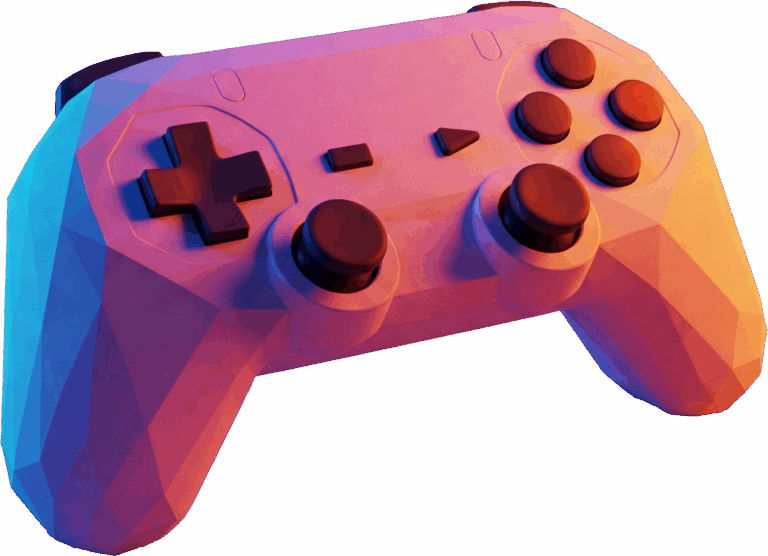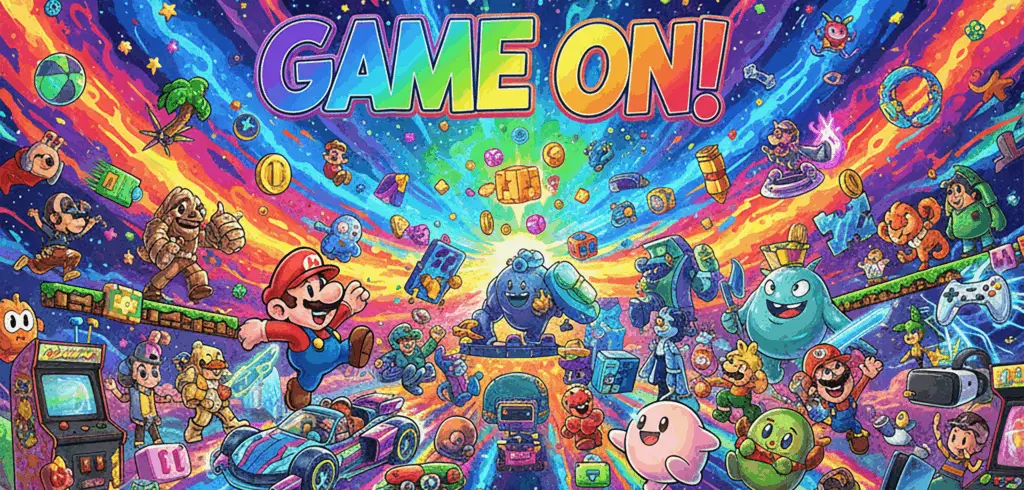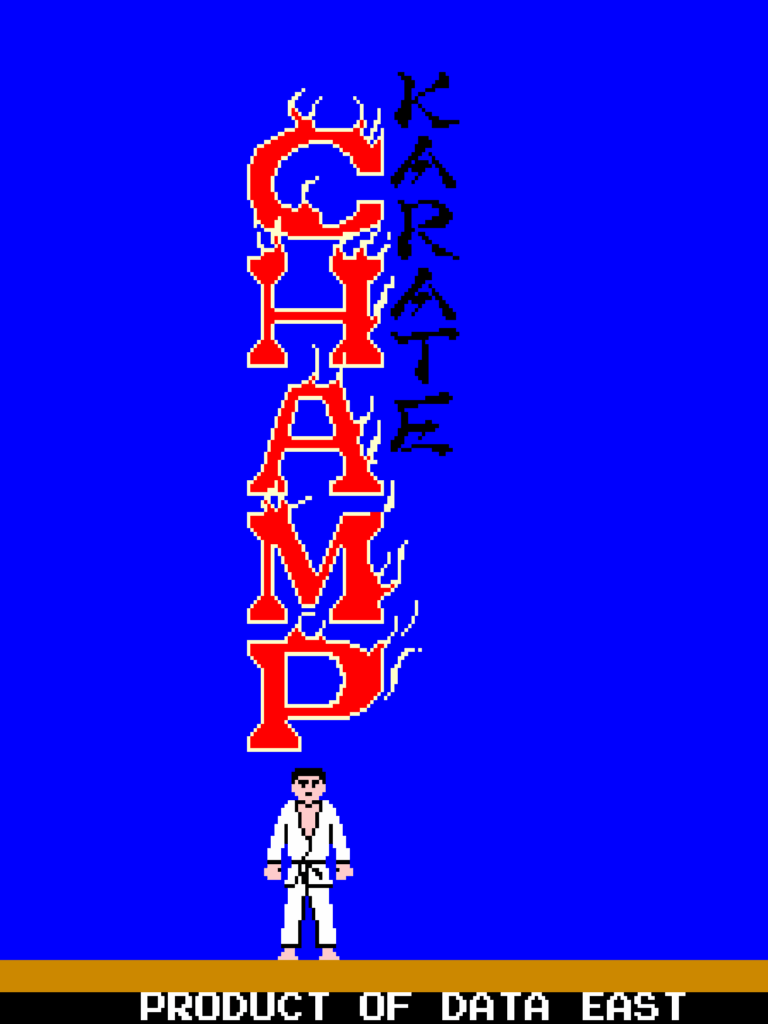Karate Champ is an arcade video game developed by Technos Japan and published by Data East in 1984. It’s a fighting game.
Introduction: The Dawn of a Genre
In the pantheon of arcade video games that defined an era, Karate Champ holds a prominent place. Developed by Technōs Japan Corporation and published by Data East in 1984, this title is not just a fighting game;.
It is widely considered the progenitor of the one-on-one fighting game genre as we know it today. Originally released in Japan as Karate Dō (空手道, “The Way of the Empty Hand”) in a single-player version, it was the subsequent Karate Champ — Player vs Player version (released internationally simply as Karate Champ) that cemented its fame, introducing the competitive multiplayer mode that would become a pillar of the genre. Characterized by an innovative dual-joystick control system and unique scoring mechanics, Karate Champ offered a deep and strategic gameplay experience that captured the imagination of players worldwide. Its influence extended far beyond the arcades, spawning conversions for various home platforms and remaining a celebrated classic, accessible even today thanks to numerous modern re-releases.
Gameplay Mechanics and Innovation
Karate Champ introduced several innovations that set it apart from previous arcade titles and laid the groundwork for future fighting games.
Match Structure and Scoring
The core gameplay consists of one-on-one karate matches between two fighters, one in a white gi (controlled by player 1) and the other in a red gi (controlled by player 2 or the CPU). The objective is to win the match by taking the best of three rounds. Unlike most subsequent fighting games, Karate Champ does not use health bars. Instead, each successfully landed hit immediately ends the round, awarding the player who delivered the blow either a half point or a full point, depending on the move and its effectiveness. The first fighter to reach two points wins the match. Each round has a 30-second time limit; if time runs out, the player with the higher score wins the round. This scoring system, based on the effectiveness of individual hits rather than accumulated damage, encouraged a more deliberate and technical style of play. The game also provided immediate feedback through speech bubbles appearing above the referee’s head, indicating the name of the move just performed, and through the pioneering use of digitized voices announcing “Half point,” “Full point,” “Fight,” and “Winner.”
The Revolutionary Dual-Joystick Control
The most distinctive innovation of Karate Champ is undoubtedly its control scheme, which utilized two 4-way joysticks for each player. By combining different directions on the two joysticks, players could execute a vast repertoire of moves – reportedly 24. This system allowed for a much wider and more nuanced range of actions compared to the single-joystick-and-button controls typical of games at the time. However, this depth came at a price: the control system was notoriously complex and required considerable practice to master, presenting a steep learning curve for new players. The need to coordinate both joysticks to perform specific moves was a significant challenge, but also a source of great satisfaction for those who managed to master it. This design choice offered unprecedented tactical depth, requiring players not only quick reflexes but also a strategic understanding of the different moves and their applications.
Move Repertoire and Strategy
The game boasted a move set based on real karate techniques, contributing to a sense of realism appreciated by many players, especially those with martial arts experience. The variety of available moves, including high kicks, low kicks, roundhouse kicks, punches, blocks, and acrobatic jumps, required players to develop precise strategies and adapt to their opponent’s style. Mastering timing and choosing the right move at the right moment was crucial for scoring points, especially full points (awarded for more difficult or well-placed hits). Some emergent strategies included jumping over the opponent and then hitting them with a back kick during their recovery phase , or performing specific movement sequences at the start of the round to exploit the computer’s artificial intelligence (AI) routines, which changed depending on the stage. The complexity of the controls and the single-hit scoring system promoted a more methodical and less frantic approach than “button masher” fighters, rewarding precision and tactics.
Bonus Levels
Between matches, the winning player had the opportunity to engage in bonus levels, which added variety to the experience and allowed for earning extra points. These interludes included challenges such as dodging flying objects thrown at the player, breaking stacks of wooden boards or blocks of ice, or even facing a charging bull on a beach. These stages became an iconic element of the game, often cited nostalgically by players of the era.
The Player vs Player Version
Although the first Japanese version was single-player only, it was the introduction of the Karate Champ — Player vs Player version (released a few months later, still in 1984) that defined the game for the international market and cemented its success. This version not only added the crucial competitive two-player mode but also featured significant improvements, including more varied backgrounds for the matches, enhanced bonus levels, improved sound samples, and more sophisticated opponent AI. The introduction of direct competition between two human players transformed Karate Champ from a challenge against the computer into a social arena, anticipating the competitive culture that would characterize the fighting game genre in the years to come. It was this version that became the de facto standard and the basis for subsequent home conversions.Karate Champ from a challenge against the computer into a social arena, anticipating the competitive culture that would characterize the fighting game genre in the years to come. It was this version that became the de facto standard and the basis for subsequent home conversions.
Development, Release, and Platforms
The genesis and distribution of Karate Champ reflect the dynamics of the video game industry in the mid-1980s.
Arcade Origins and Development
Developed by the emerging Japanese studio Technōs Japan, already known for Tag Team Wrestling, and published by the arcade giant Data East, Karate Champ first appeared in Japanese arcades in May 1984 under the title Karate Dō. The international Player vs Player version followed quickly, being distributed worldwide in September of the same year.
Arcade Hardware
The Karate Champ arcade cabinet was based on relatively powerful hardware for the time. It used two Zilog Z80 processors operating at 3 MHz, one for the main game logic and one dedicated to audio, which allowed for the inclusion of the innovative digitized voices. The game was displayed on a vertically oriented raster screen with a resolution of 256 x 224 pixels. The most characteristic hardware element was, of course, the dual 4-way joysticks for each player, essential for implementing the complex control scheme. This hardware configuration, particularly the processing power sufficient to handle the advanced controls and audio, was crucial for realizing the game’s innovative vision.
Home Conversions and Their Reception
Given the huge success in arcades, Data East commissioned and published conversions of Karate Champ for the major home platforms of the era. The first to arrive, in 1985, were those for the Apple II and Commodore 64, developed by Berkeley Softworks. The Nintendo Entertainment System (NES) version followed in 1986, and later for the Famicom Disk System in Japan (1988). However, translating the arcade experience to home systems proved problematic. The main challenge was adapting the unique dual-joystick control system to standard controllers equipped with only one joystick (or D-pad) and buttons. This limitation often led to compromised and less intuitive control schemes (e.g., mapping the second joystick’s directions to buttons ), which failed to fully replicate the fluidity and precision of the arcade original. Consequently, the reception of the home versions was mixed. While some reviews acknowledged the attempt to bring the arcade experience home , others harshly criticized the imprecise controls and inferior gameplay, with the NES version receiving particular negative criticism from players over the years.
Reception, Legacy, and Impact
The impact of Karate Champ on the video game world was immediate and lasting, extending from commercial success to influence on game design and even into the courtroom.
Extraordinary Commercial Success
Karate Champ was a commercial phenomenon. In Japan, it quickly became one of the highest-grossing table arcade games. Internationally, the success was even more striking. Data East sold 10,000 arcade cabinets within the first two months of launch, making it the company’s best-selling arcade game ever. In the United States, an estimated 30,000 units were distributed by April 1985. It was the highest-grossing arcade game in the US during the summer of 1985 and ended the year as the overall highest-grossing arcade game, particularly dominating “route/street” locations (i.e., those outside dedicated arcades, like bars and shops). The home computer versions also achieved remarkable success. The floppy disk version for computers in the US received “Gold” (100,000+ copies), “Platinum” (250,000+ copies), and finally “Diamond” (500,000+ copies) awards from the Software Publishers Association (SPA), becoming the first game ever to receive the latter recognition. It remained one of the best-selling computer games in the US until 1989. This cross-platform success, both in arcades and on the home market, was unusual for the time and underscores the game’s broad appeal, solidifying it as one of the major video game hits of the mid-1980s.
Pioneer of the Fighting Game Genre
Beyond commercial success, the most significant legacy of Karate Champ lies in its pioneering role in defining the fighting game genre. Although elements of the genre had appeared in earlier titles like Heavyweight Champ (1976) and Warrior (1979) , it was Karate Champ that codified and popularized many of the conventions that would become standard: the best-of-three round match structure, a large set of specific moves executable through complex inputs, the emphasis on one-on-one competition (especially in the Player vs Player version), and the use of realistic martial arts techniques. Its success paved the way for a wave of fighting games in the following years, culminating in the genre’s explosion in the early 1990s with titles like Street Fighter II.
Conclusion: The Indomitable Spirit of Karate Champ
Karate Champ was not just a successful video game; it was a milestone that decisively helped shape the video game landscape. Its pioneering role in the one-on-one fighting game genre is undisputed, having introduced and popularized fundamental mechanics like the hit-based scoring system, the round structure, and, above all, direct player-versus-player competition. The innovative yet complex dual-joystick control system offered unprecedented strategic depth for its time, clearly distinguishing it from other arcade titles.
Its extraordinary commercial success, both in arcades worldwide and on the home computer market, testifies to its broad appeal and ability to capture players’ imaginations. The legal controversies it became embroiled in highlight its influence and the nascent debate surrounding intellectual property in the video game medium.
While acknowledging its criticisms, such as the steep learning curve of the controls and the varying quality of home conversions, the legacy of Karate Champ remains intact. It laid the foundation upon which countless subsequent fighting games would be built, directly influencing the evolution of a genre that still dominates the competitive scene today. Thanks to modern preservation efforts, Karate Champ is not just a nostalgic memory but a playable classic, a piece of video game history that continues to challenge and fascinate players, keeping its indomitable spirit alive.
It’s perfectly emulated by MAME.
Karate Champ (Arcade) infos:
| KARATE CHAMP (ARCADE) | |
|---|---|
| Year | 1984 |
| Developer | Technos Japan |
| Publisher | Data East |
| Country | Japan |
| Genre | Fighting |
| CPU(s) | Zilog Z80 3.000000 MHz Zilog Z80 4.000000 MHz |
| Video | 256 x 224 (V) 59.185606 Hz |
| Sound | Speaker 2 x AY-3-8910A PSG 1.000000 MHz DAC08 DAC 1 Channel |
| Players | 1-2 |
Gallery:
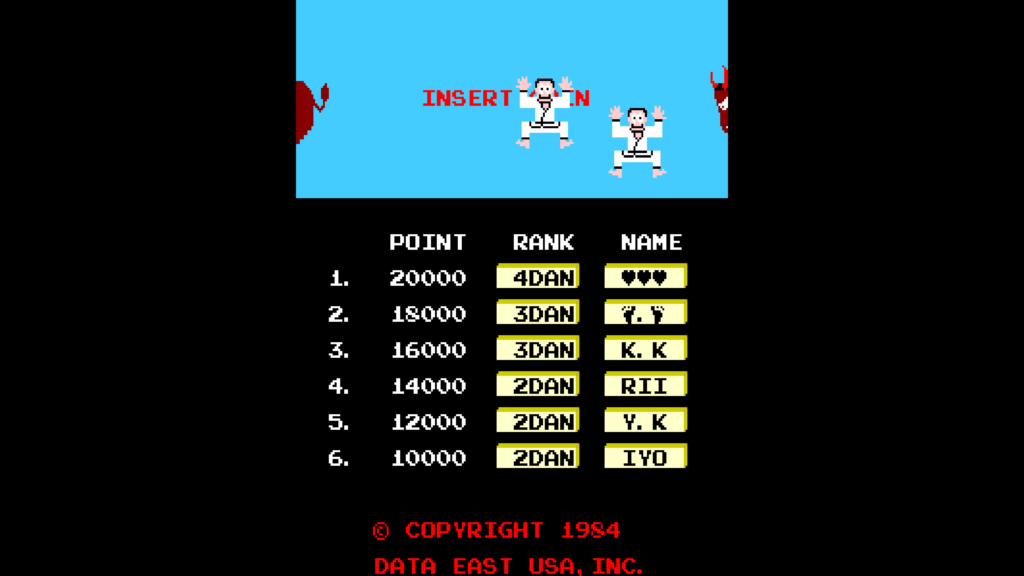
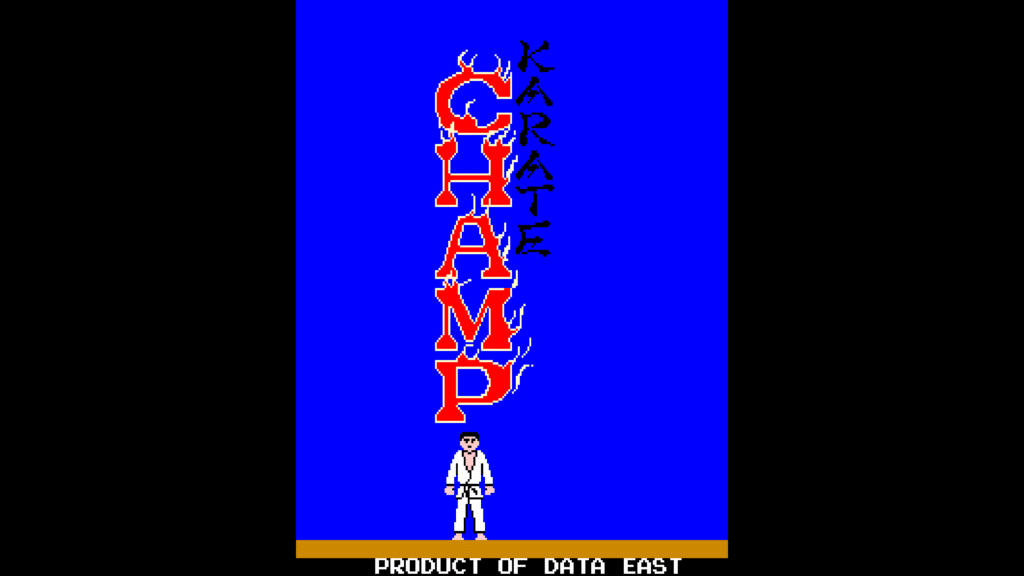
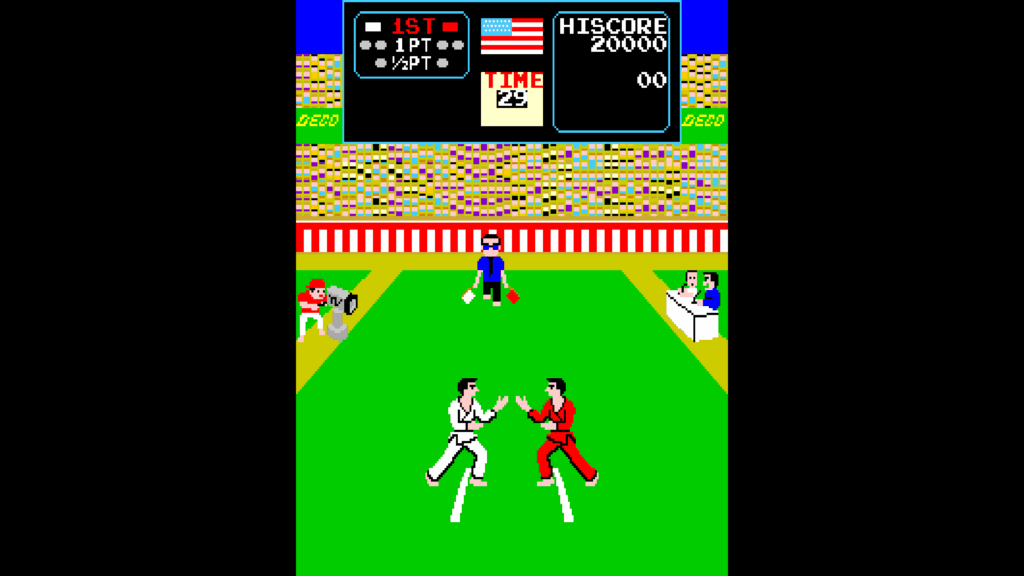
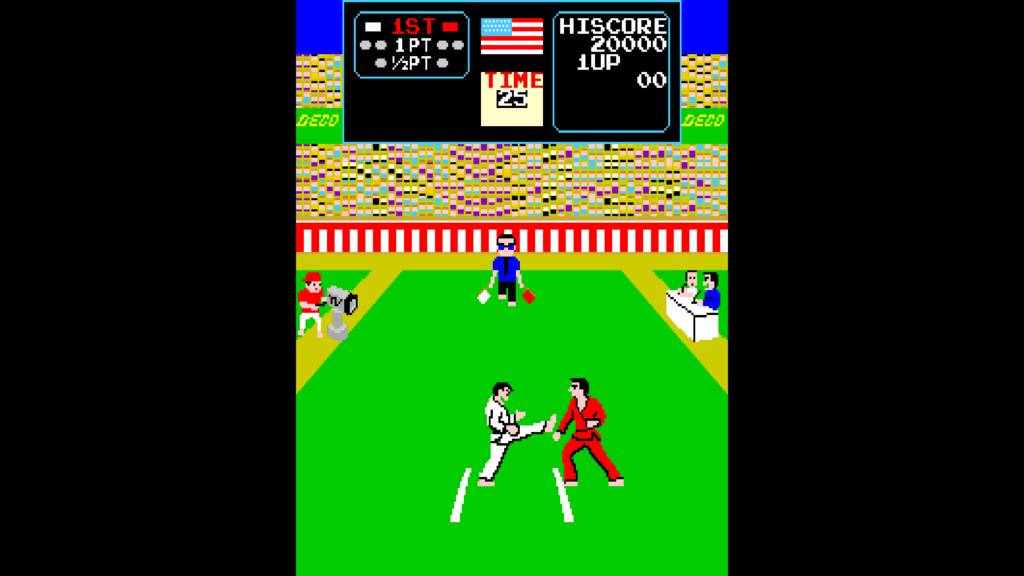
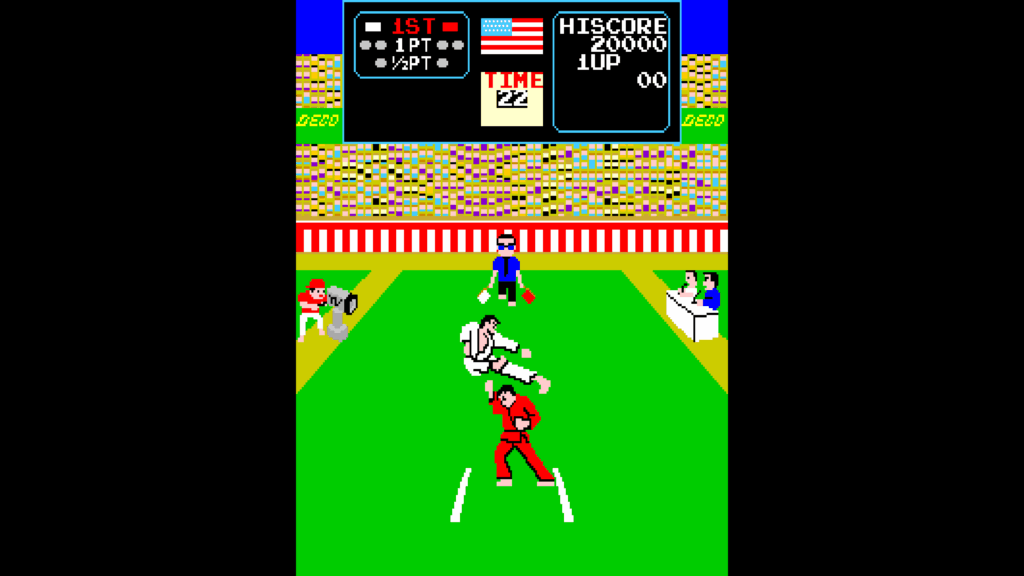
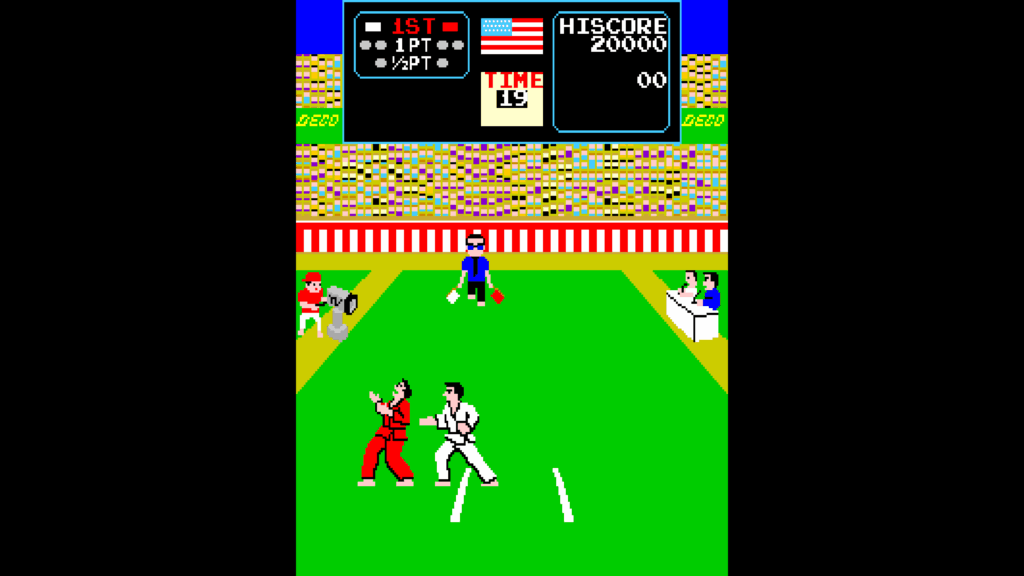
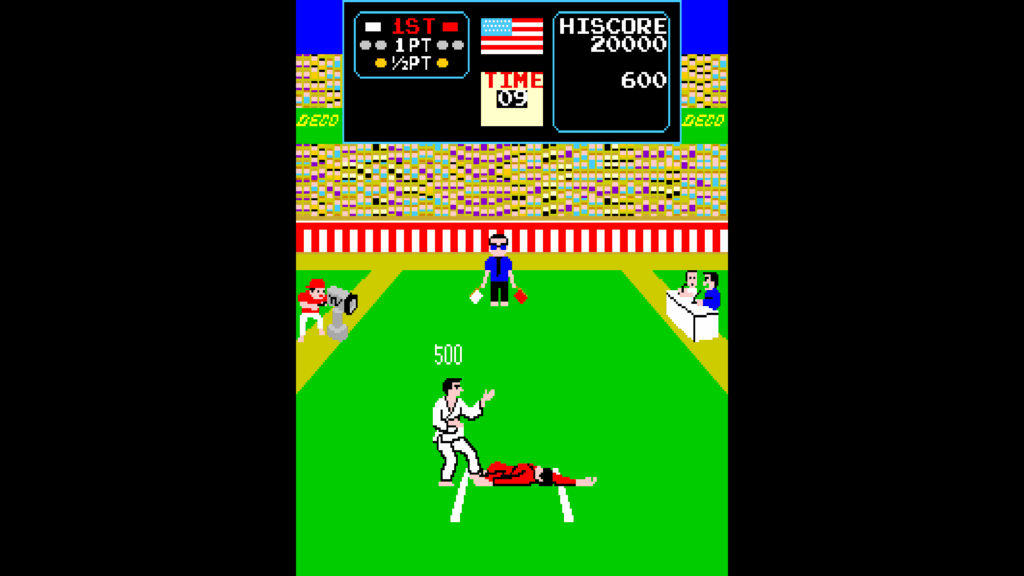
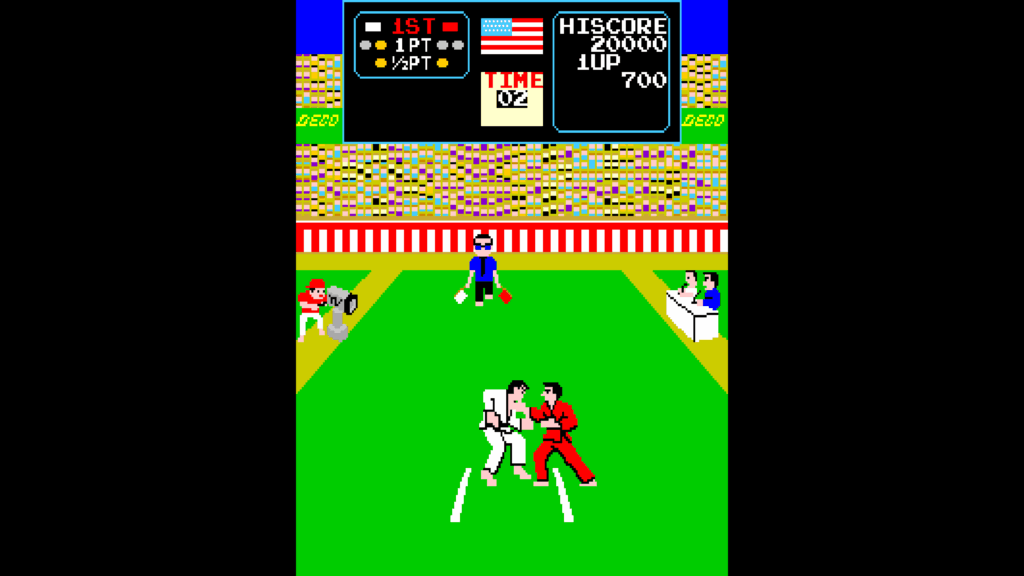
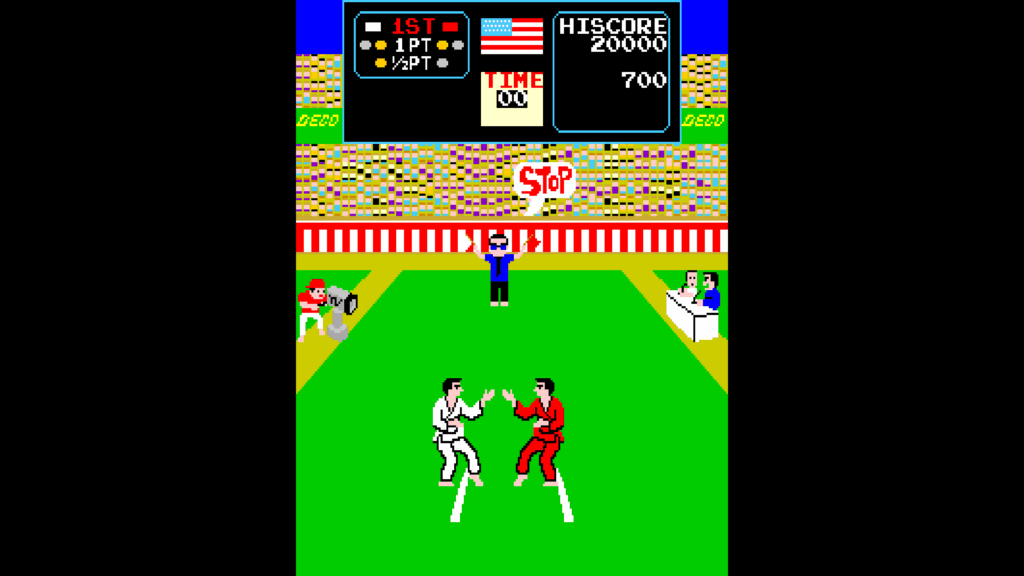
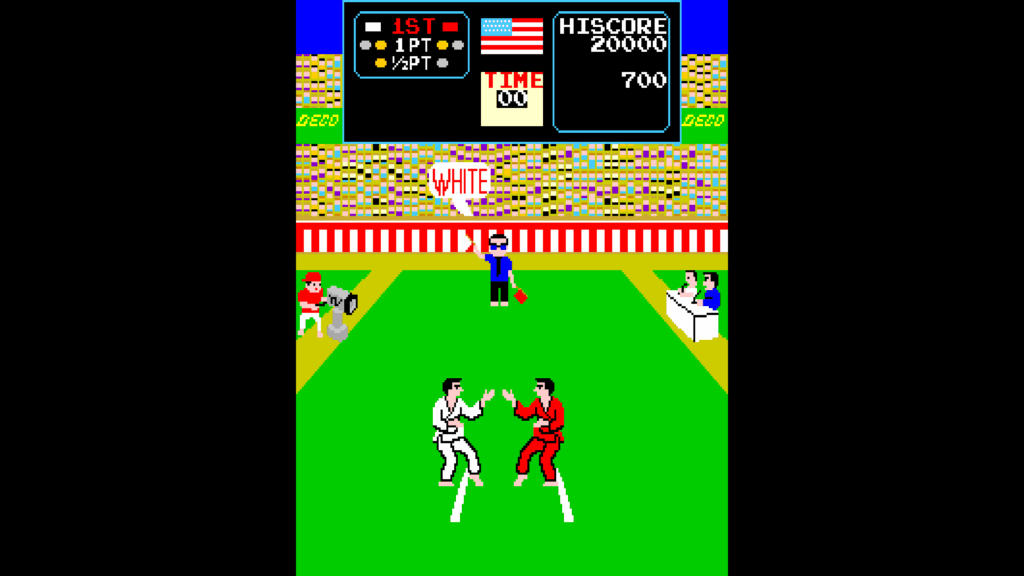
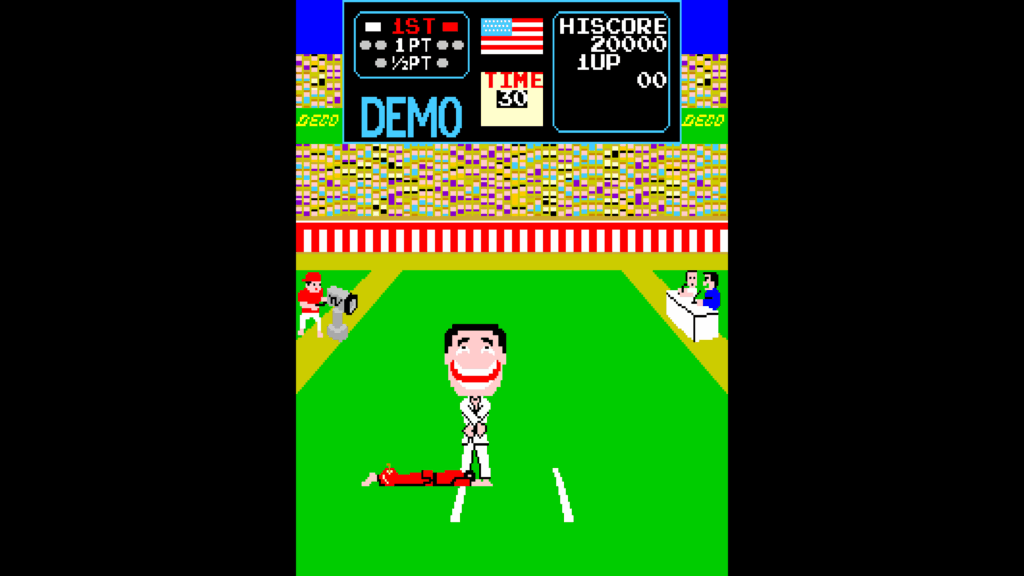
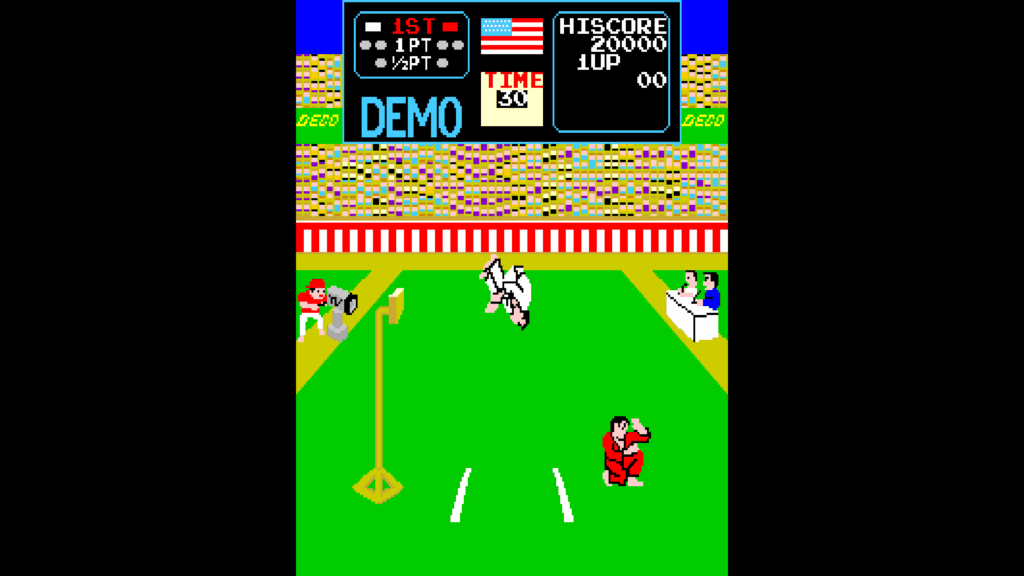
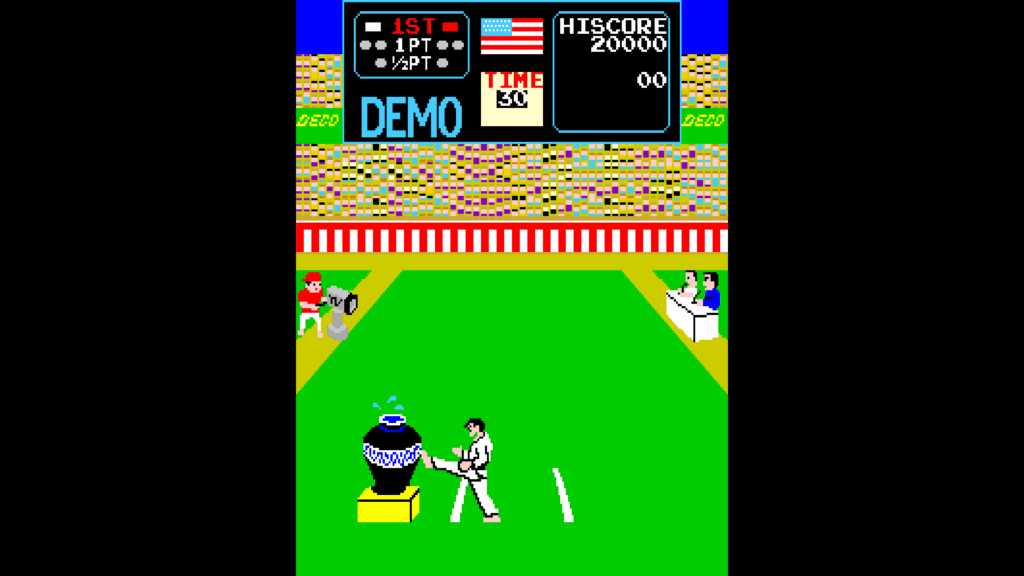
Videos:
